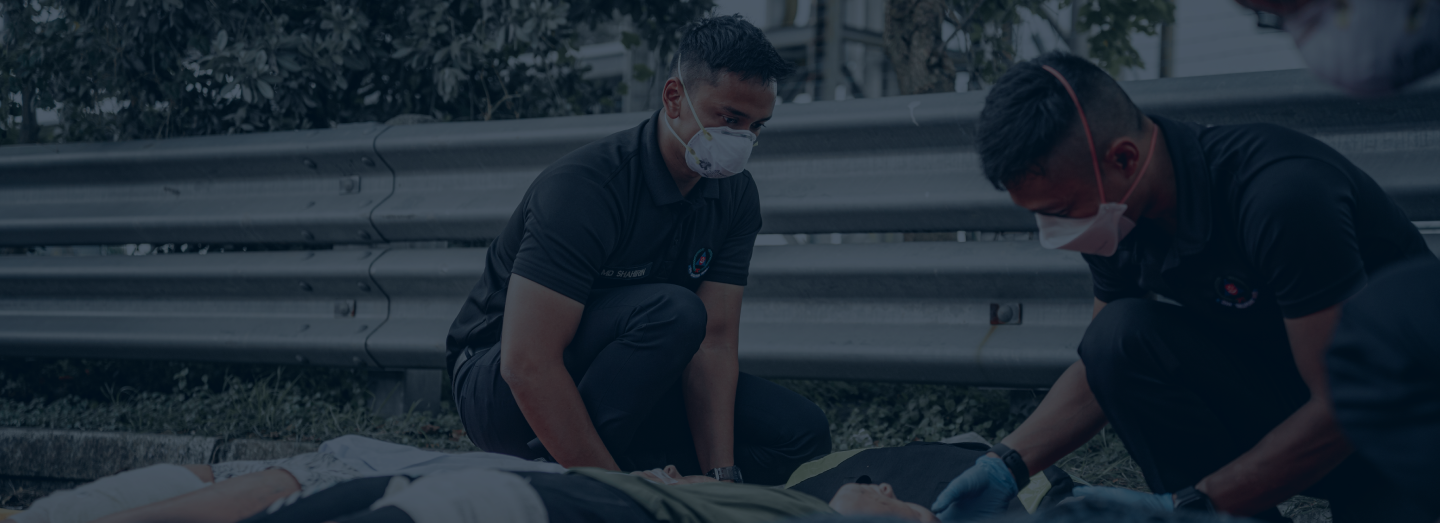A fire broke out at an industrial building at 30 Toh Guan Road on 4 May 2017, resulting in one fatality. The Singapore Civil Defence Force's (SCDF) investigations into the fire found that the composite panels used as cladding on the building's external walls were not of Class "0" standard as required under the Fire Code. SCDF"s Fire Code requires composite panels used as cladding to be either non-combustible or certified as Class "0".
2. The composite panels on the building at 30 Toh Guan Road were supplied by an overseas manufacturer through a local sole distributor. Extensive investigations found that 40 other buildings could potentially have used non-Class "0" composite panels as cladding on their external walls. Nevertheless, SCDF has assessed that all the buildings are safe for occupancy, and is working closely with building owners to rectify the improper use of composite panels on their building within two months.
Preliminary Findings into Fire at 30 Toh Guan Road
3. Arising from its findings into the fire, SCDF filed a Police report on 6 July 2017. Based on the latest Police investigations, it appears that:
a) The local distributor sold two models of composite panels from the same Alubond brand - model FRB1 (certified as Class "0" for use as cladding on external walls) and model FRB2 (certified as Class "1" for roofs and internal walls).
b) Stocks of both Alubond models FRB1 and FRB2 were mixed together at the warehouse of the local distributor. These panels from the mixed stock in the warehouse were supplied to 40 buildings, for use as cladding on the external walls of these buildings.
c) Tests showed that the external walls of some of the 40 buildings contain a mixture of Alubond models FRB1 and FRB2, i.e. some of the composite panels used as cladding on the buildings" external walls were not of the required Class "0" standard, and ought to have been used only for roofs or internal walls.
d) The stocks of Alubond model FRB1 were also not uniformly of the required standard, i.e. even where the panels were said to be model FRB1, some of them did not comply with Class "0" requirements. Investigations are continuing as to how this came about.
Actions by SCDF
4. SCDF has carried out immediate actions to confirm the fire safety of all the 40 buildings referred to in paragraph 3b.
5. SCDF conducted comprehensive on-site fire safety assessments of the 40 buildings. All of them remain fit and safe for occupancy due to their existing fire safety provisions. In its assessments, SCDF examined various factors, including the proximity of the cladding to possible ignition sources; occupied spaces and escape routes; the proportion of the external walls covered with cladding; and the availability of fire protection systems such as fire hose reels, sprinklers and fire alarms.
6. SCDF has notified all affected building owners, and is working closely with them to test the cladding on their external walls. The building owners are required to disclose to their tenants within 48 hours, the status of their cladding as conveyed to them by the SCDF. Please refer to table below for a breakdown of affected buildings as at 24 August 2017.
| Description | No. of Buildings |
|---|---|
Number of Buildings Tested Buildings tested to have Class "0" composite panels as cladding Buildings tested to have non-Class "0" cladding | 19 5 14 |
| Number of Buildings That Have Not Been Tested | 21 |
| Total Number of Affected Buildings | 40 |
7. The owners of buildings whose cladding were tested to be non-Class "0" must work with their Qualified Persons (QPs) to remove the affected cladding within two months, starting from the ground level.
8. In the meantime, the building owners will be required to strengthen fire safety practices by ensuring that their fire safety systems are in good order, enhance vigilance of their personnel, and remove fire hazards.
9. Police investigations into the matter are ongoing to determine how non-Class "0" composite panels meant for use on roofs and internal walls were used as cladding on external walls. Action will be taken if there is evidence of criminal culpability. SCDF will also review the fire safety regulations and processes for certification, relating to the use of composite panels on buildings, to ensure that they remain robust.
